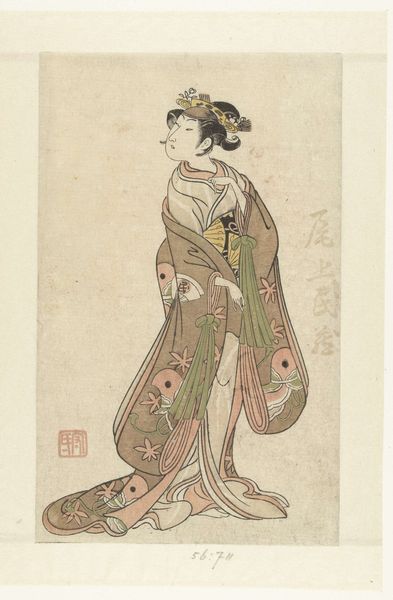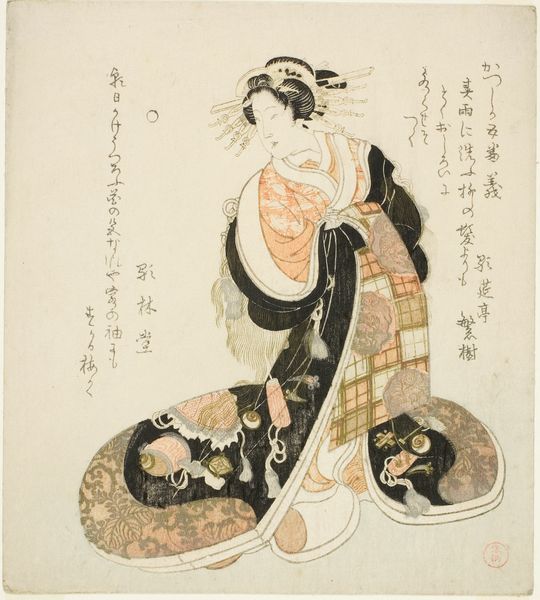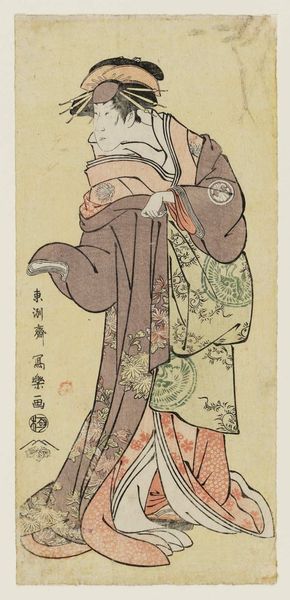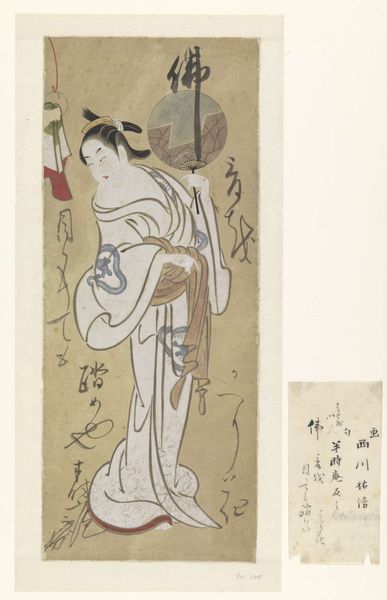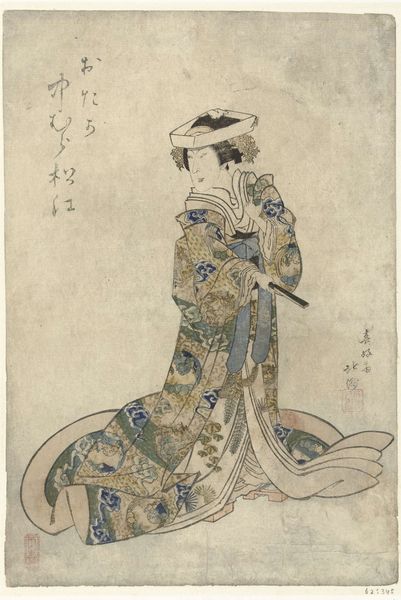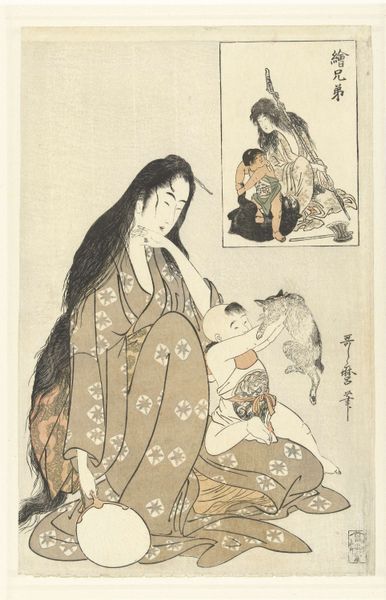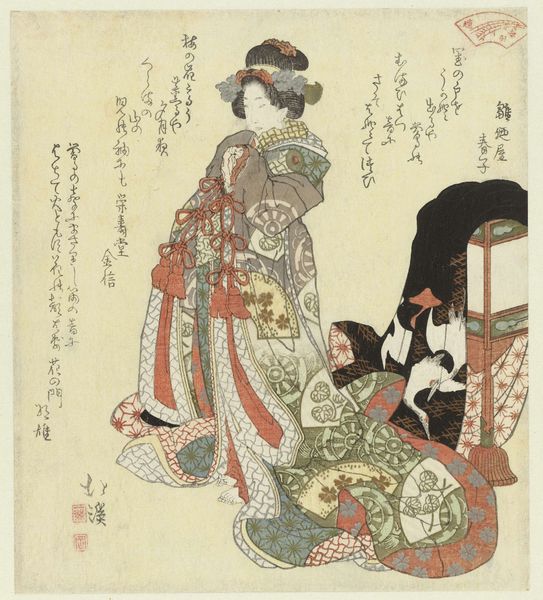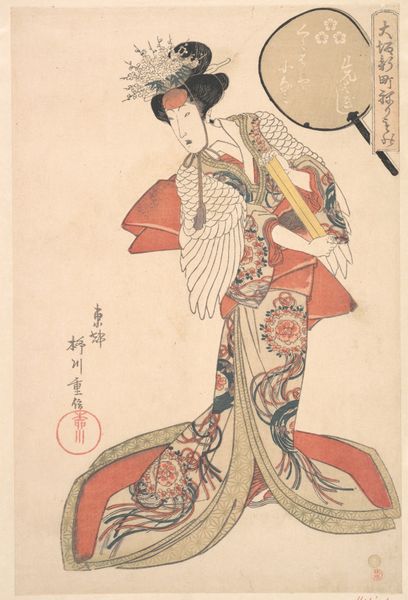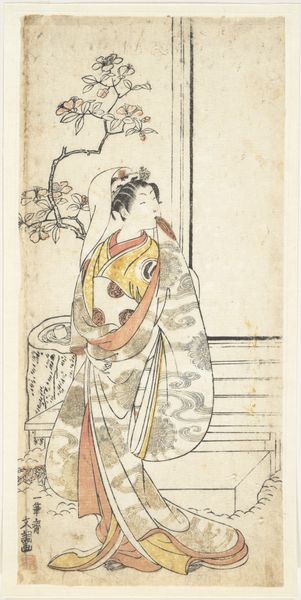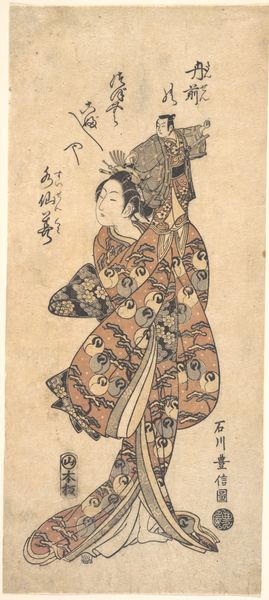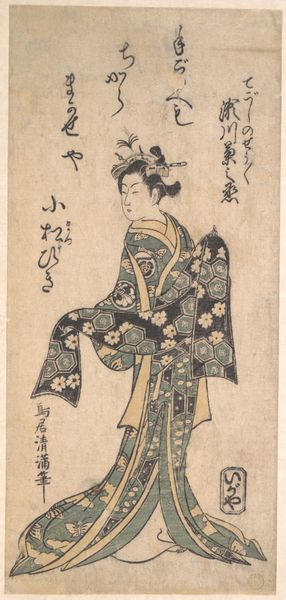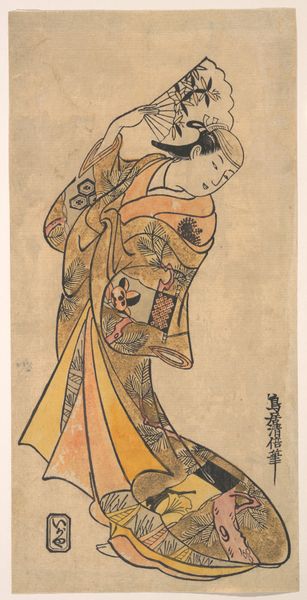
Dimensions: height 378 mm, width 255 mm
Copyright: Rijks Museum: Open Domain
Editor: So this watercolor print by Tsukioka Kōgyo, created between 1922 and 1929, is entitled "Scene uit het Noh theaterstuk Aoinoue," and what immediately strikes me is how the patterns on the figure's robes create such a striking visual contrast. What elements of composition or technique particularly grab your attention? Curator: The figure’s garment is indeed constructed through distinct geometric forms and motifs: notice how the diamond patterns contrast sharply against the organic shapes on the teal overcoat, featuring images of clouds and birds. Editor: It almost feels like there are two figures in one because of the bold garment change between geometric and natural forms. Is this a conscious decision by the artist to present the character this way? Curator: Perhaps. Note also the pale, flat background that minimizes any spatial depth. This compression forces the viewer's attention directly to the adorned figure and heightens the graphic quality of the print. Do you see how this choice affects your reading of the character's presence? Editor: I do. It makes the figure almost float there; which emphasizes the mask they’re wearing. Is it the mask that informs us about the Noh play? Curator: Precisely. While we are divorced from the original theatrical performance, we can engage with its material representation. Notice, for instance, the positioning of the figure above the piece of wood; what visual meaning may we ascribe to that positioning? Editor: Maybe that they're powerful figures or supernatural, but trapped or suspended above nature, but not actually touching it? This close look has shown me so much about how individual choices make an image. Curator: Exactly. Attending to such compositional nuances enhances our experience beyond simple representation, to apprehend the rich interplay of formal elements within this print.
Comments
No comments
Be the first to comment and join the conversation on the ultimate creative platform.
